A very rare big size, annual polypore. One of the four species listed in Schedule 8. of Wildlife and Countryside Act (1981), so it is illegal to pick or even cut samples. Most of the photos are from Hungary, where it is also rare, but not protected! The photos taken by Matt Payne are from the UK, a lucky rare find.
Home / Mushroom Guide /
Oak Polypore
Oak Polypore
| Mushroom Type | |
| Common Names |
Oak Polypore (EN), Porojęzyk Dębowy (PL), Tölgyfa-Kérgestapló (HU) |
| Scientific Name |
Buglossoporus quercinus |
| Synonyms |
Buglossoporus pulvinus, Piptoporus quercinus |
| Season Start |
Aug |
| Season End |
Oct |
| Average Mushroom height (CM) | |
| Average Cap width (CM) |
Please note that each and every mushroom you come across may vary in appearance to these photos.
Fruiting Body
10–30 cm across, shelf-like to slightly convex, fan-shaped, semicircular or rounded. Margin rounded and finely suede-like. Whitish at first, then yellowing, but turns brownish with age. Upper surface smooth, finely velvety when young, might be cracking with age.
Pores
Tubes up to 4 mm long, white, pores circular, 2–4 per mm, pore surface is white when young, then off-white to buff, bruising brownish when damaged.
Flesh
Up to 4 cm thick, soft or corky. Whitish, once cut bruising reddish first, then slowly turns brownish.
Habitat
Often on barkless hulks, fallen bigger branches or cutting surface of Oak trunks. Saprotrophic on weak, old Oaks (some authors wrote it is parasitic on Oaks), causing brown-rot on its heartwood. Growing solitary or in small groups of 2-3 fruit bodies.
Possible Confusion
Birch Polypore (Fomitopsis betulina), pictured, grows on Birch only, and its flesh remains white.
Beefsteak Fungus (Fistulina hepatica) has red flesh with white veins and can often be found bleeding, while Oak Polypore has whitish flesh which turns reddish first then slowly to brownish.
Oak Bracket (Pseudoinonotus dryadeus) is mostly much tougher. Growing at the base of old Oak trees, on oak stumps or on the ground attached to buried roots. Often can be seen some dried amber coloured droplets on its margin.
Chicken of the Woods (Laetiporus sulphureus) is bright yellow everywhere, including its flesh.
Spore Print
Spore print is whitish. Spores cylindrical to spindle-shaped, curved slightly at base, smooth and colourless (hyaline).
Taste / Smell
Inedible, tastes bitter when matured, smell is nothing distinctive.
Frequency
Very rare in the UK, and protected by law (in highest level). If you are lucky enough to have found one, please, record it via the regional branch of BMS or one of the known recording apps/platforms!
Other Facts
The scientific name changed recently to Fomitopsis pulvina, but apart from mycologists, nobody uses it just yet, so we decided to leave the scientific name as it was before, until the new name became more well-known.
This change is supported by DNA-evidence, and the relevant publication is:
Spirin V, Runnel K, Vlasák J, Viner I, Barrett MD, Ryvarden L, Bernicchia A, Rivoire B, Ainsworth AM, Grebenc T, Cartabia M, Niemelä T, Larsson KH, Miettinen O: The genus Fomitopsis (Polyporales, Basidiomycota) reconsidered. Studies in Mycology, 2024;107:149–249.
In March 2025 the IUCN (International Union for Conservation of Nature) added 1000 fungal species to the IUCN Red List of Threatened Species. The IUCN (Global) Conservation Status of Oak Polypore (Fomitopsis pulvina, syn: Buglossoporus quercinus) is: VU – Vulnerable, with decreasing population. For more information, see on the following link.


 (7 votes, average: 4.43 out of 5)
(7 votes, average: 4.43 out of 5)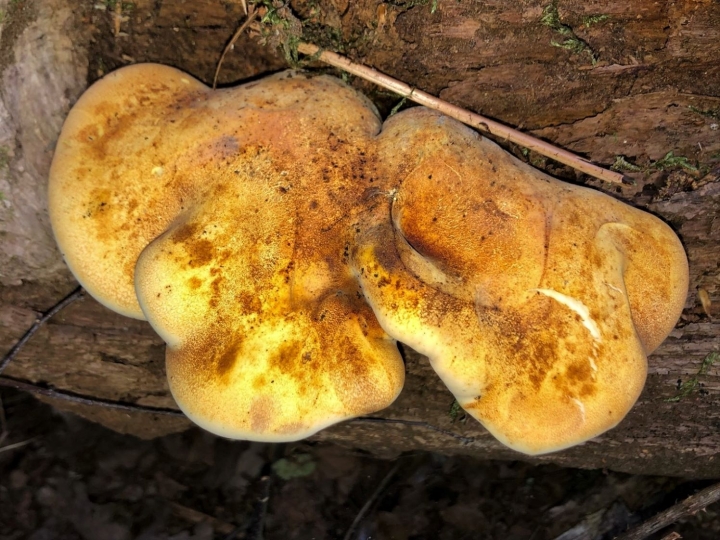
















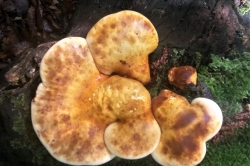
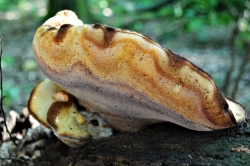
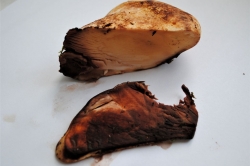
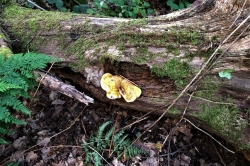
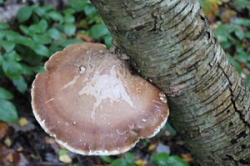






Leave a Reply